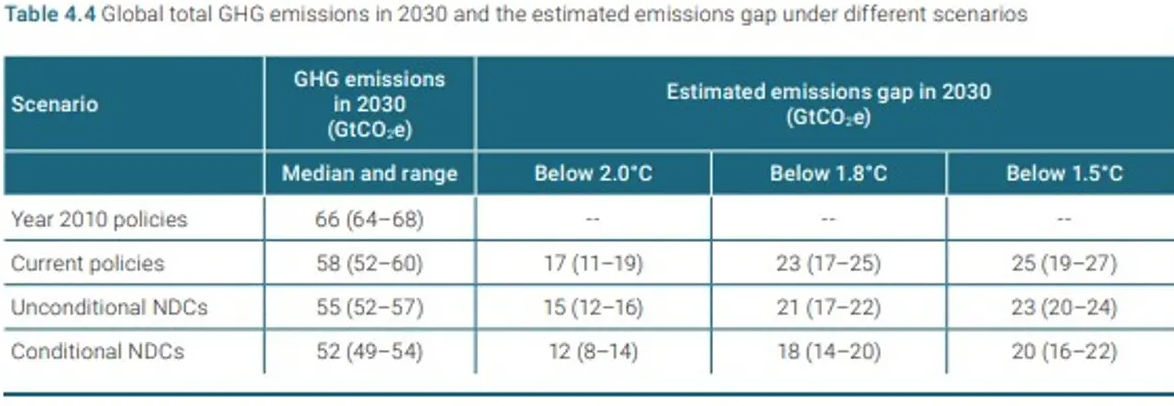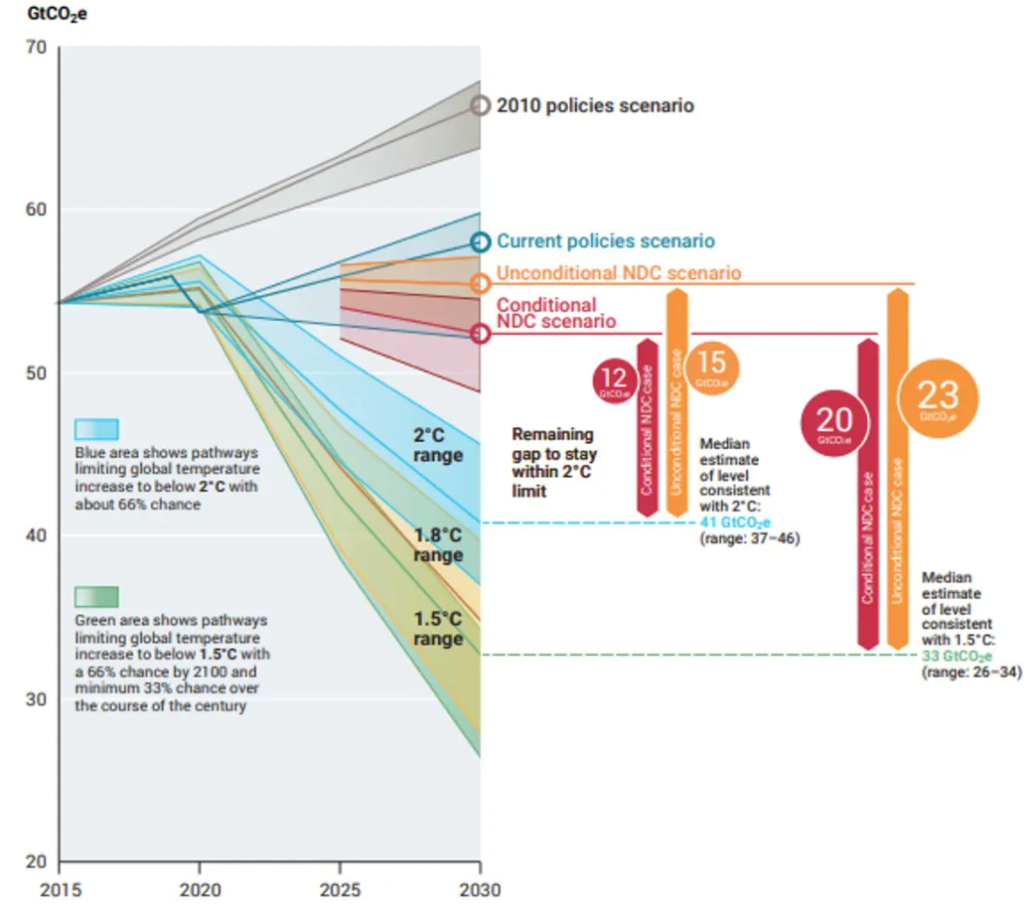Global emission gap condemns us to a 2.8°C warmer world
Global emission gap with 1.5°C is worth 23 GtCO2 per year
(sustainabilityenvironment.com) – The climate policies in force today are still leading us towards a world of 2.8 degrees warmer: we lost a year without doing anything concrete after COP26. It is a level of ambition “sadly inadequate” compared to the targets in Paris. In order to achieve the milestones of 2030 and not waste this decade, a “systemic, large-scale and rapid transformation around the world” is needed. Only then can we avoid a “climate disaster”. The assessment comes from the Emission gap report 2022, the annual analysis of the UN Agency for Environmental Protection (UNEP) that evaluates the global emission gap that separates us from the two thresholds of 1.5°C and 2°C.
A wasted year
The mantra of the COP26 in Glasgow, a year ago, was “keep 1.5 degrees at hand”. This was a formula that the president of the summit, the Englishman Alok Sharma, had pushed to cushion the weight of the failure of the summit when it was clear that not enough climate commitments would arrive.
This “keep at hand”, in concrete terms, has resulted in a trick: COP26 has not collected adequate results, but has closed with the commitment (not binding) to present new climate targets strengthened within a year instead of respecting the five-year deadlines set by the Paris agreement.
The trick worked for Sharma, whose image did not suffer too much in Glasgow – except after being torpedoed by the new British Prime Minister Rishi Sunak, who chose not to participate in COP27. But it did not work for the state of world climate action. Since the summit in Scotland ended, in fact, only 24 out of nearly 200 countries have submitted new National Voluntary Contributions (NDCs). NDCs are non-binding policy documents that contain a state’s climate commitments and are deposited with the UNFCCC. They are the basis for international summits to assess progress in climate action.
How much is the global emission gap worth today?

According to the 2022 Emission gap report, these new NDCs have erased only 0.5 billion tons of CO2 equivalent (Gt CO2e) from the global carbon budget to 2030. One trifle, less than 1% of the total. It is not enough: the real policies of the states are behind their NDCs. Not by a little. The gap between the promised reductions and those actually already “in the pipeline” is 3 GtCO2e for unconditional NDCs and 6 GtCO2e for conditional NDCs. The first is the commitments that a state promises to honor in any case, the second is the additional commitments that it will respect provided that certain conditions are met.

It should be noted that the NDCs to date is not even sufficient on paper. If they were implemented in a state-of-the-art, calculate the UNEP, they would still lead to global warming of, respectively, 2,6°C and 2,4°C. Many countries will contest these numbers because they weigh their long-term commitments to carbon neutrality on the trajectory, which altogether would lead to a world 1.8 to warmer C. But this scenario, the report says, is “not credible” because of the “discrepancy between current emissions, short-term NDC targets and long-term net-zero targets”.
The road, says UNEP, is still long. Today unconditional NDCs would cut emissions to 2030 by just 5%, and conditional emissions by 10% (the IEA yesterday estimated that current policies lead to an increase in emissions to 2030 by more than 10%). To hope to stay below 2 ºC and 1.5 ºC, greenhouse gas cuts by the end of the decade must be at least 30% and 45%.






